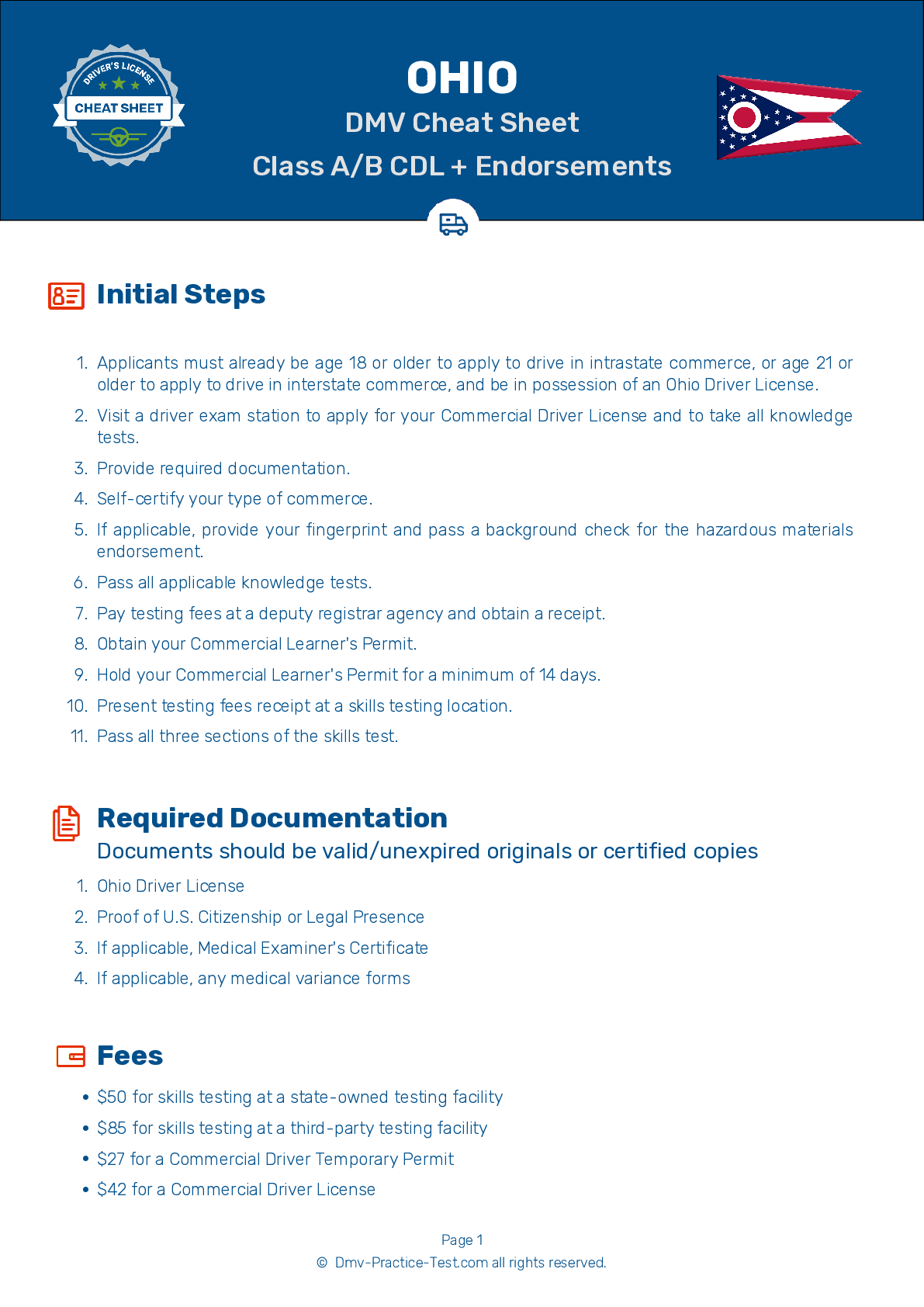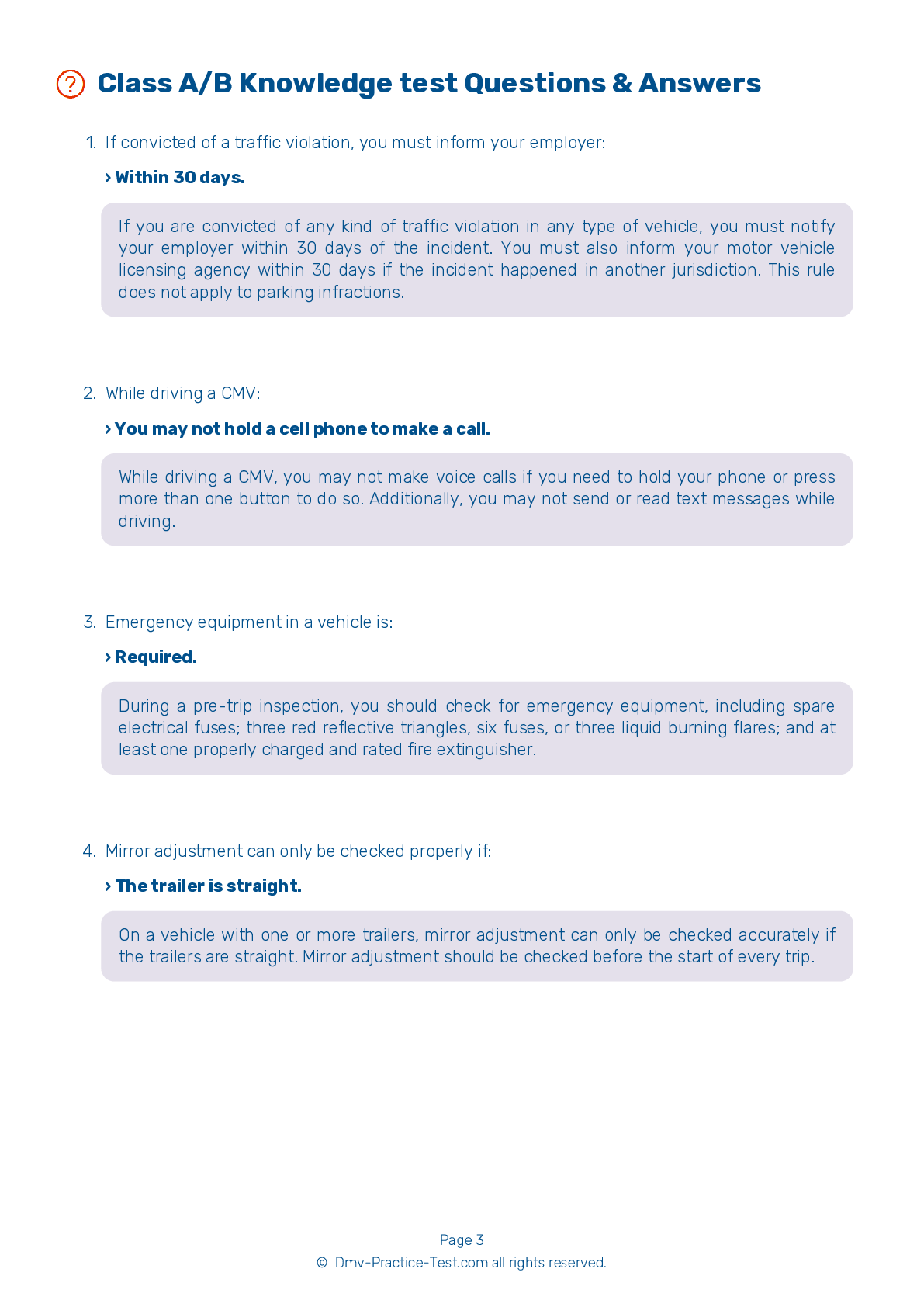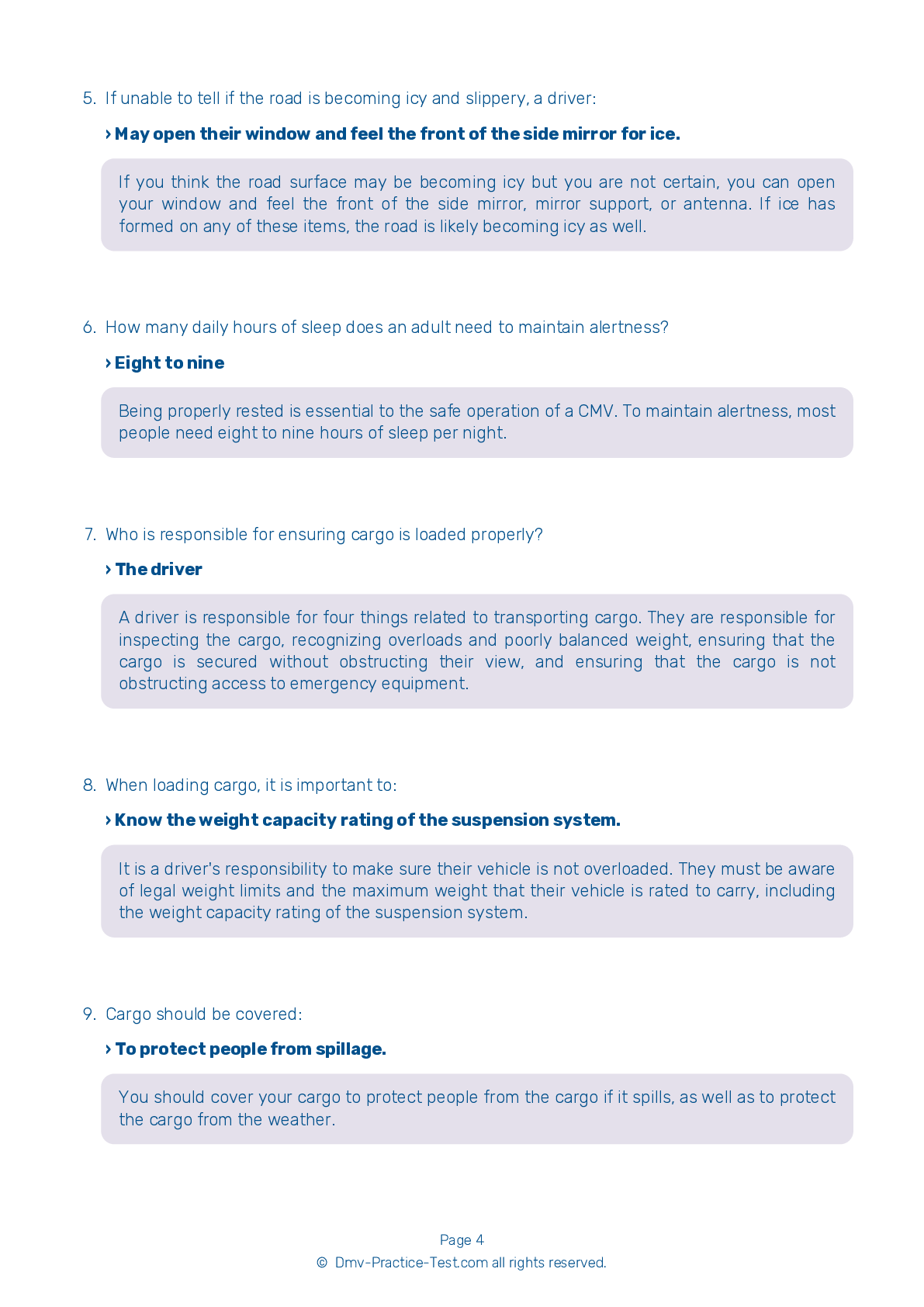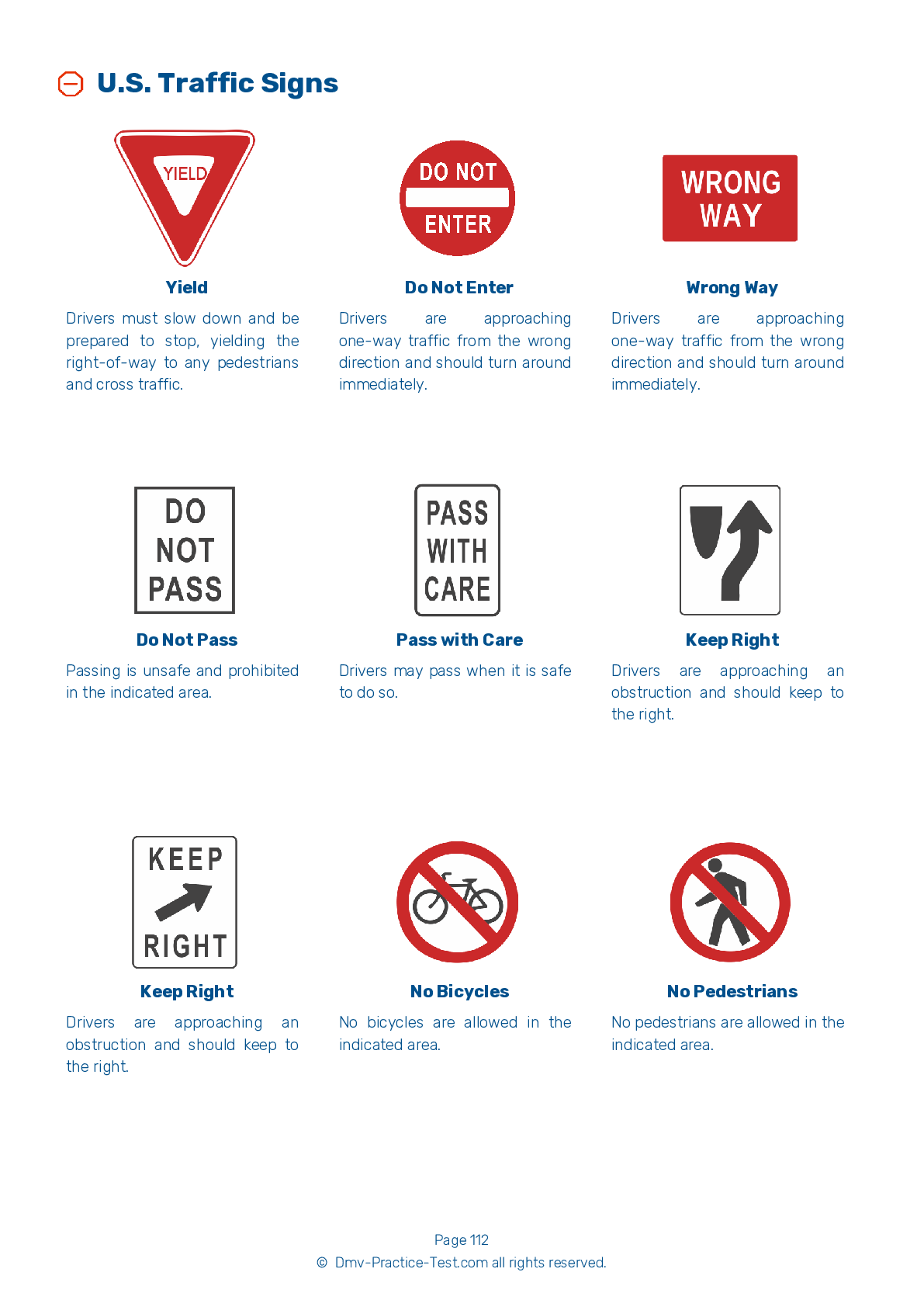Hazmat Test | Ohio 2025 #1 Page 3 of 5
On our website, we provide FREE practice - CDL hazmat test online! The official exam test consists of several obligatory parts, with all of them checking your knowledge of different blocks of road rules. If you need to obtain a OH CDL hazmat endorsement in 2025, practice as much as possible. Free sample tests published on our website will help you check and improve your knowledge and boost your grades. Please bear in mind that Ohio requirements for issuing a hazmat endorsement for CDL may vary from those established in other states.
13 . Who must mark and label the materials for shipping?
Shippers of hazardous materials are required to warn drivers and others about the risks of the materials by putting hazard warning labels on packages, putting placards on the transporting vehicles, and providing proper shipping papers and emergency response information.
14 . When loading compressed gas, the liquid discharge valves should be:
On a compressed gas tank, liquid discharge valves must always be kept closed, except during loading and unloading.
15 . When approaching a railroad crossing while transporting chlorine:
If transporting any amount of chlorine, a driver must always stop at a railroad crossing 15 to 50 feet from the nearest track, regardless of the presence of a train.
16 . As a driver, which of the following is not your job at the scene of an accident?
If you are involved in an accident while carrying hazardous materials, it is your responsibility as the driver to keep people away from the scene; limit the spread of material if you can safely do so; inform emergency response personnel of the dangers posed by the materials; and provide emergency personnel with the shipping papers and emergency response information. Unless you have protective equipment and the necessary training, do not try to fight hazardous materials fires yourself.
17 . The National Response Center must be notified of an incident resulting in any of the following, except:
The National Response Center must be notified of any incident that results in death; hospitalization; $50,000 or more in estimated property damage; an evacuation of the general public or closure of a major transportation route/facility for more then one hour; fire, breakage, spillage, or suspected contamination involving radiation, bacteria, or toxins. Additionally, if the carrier judges the situation to be so serious that it should be reported, it should be reported.
18 . If you identify hazardous materials leaking while you are driving, you should:
If you discover that a cargo of hazardous materials is leaking from your vehicle, you should park the vehicle as soon as possible. The longer you continue driving, the longer the trail of contamination becomes. While this creates potential danger and harm to others, it also increases clean-up expenses.
See the exact questions that will be on the 2025 Ohio DMV exam.
99.2% of people who use the cheat sheet pass the FIRST TIME
Lillian MCcranie explains how our CDL study guide was helpful in passing the exam and recommends it to everyone.
Cameron tells us how he purchased the CDL exam, and found it to be a useful tool which helped him pass the exam and find a job.



